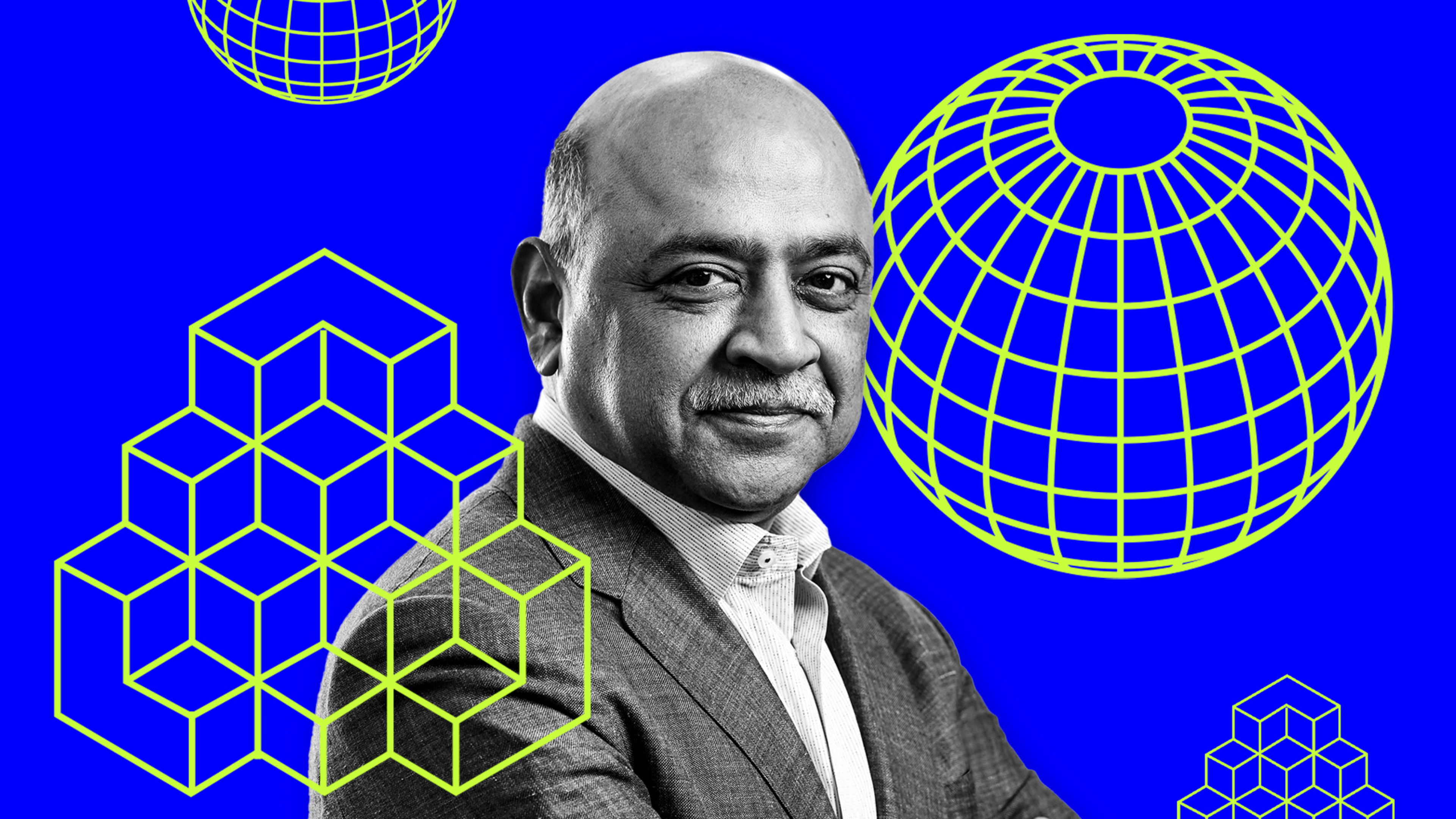IBM is one of the best-known names in technology, and yet most people would struggle to explain exactly what the company does. That’s understandable. The Armonk, New York-based tech mainstay has often reinvented itself, and is in the process of becoming a hybrid cloud company that serves artificial intelligence services—a core business resembling Amazon’s AWS or Microsoft’s Azure.
“Going from tabulating machines to electronic calculators to the first semiconductor-based computers to today’s day of hybrid cloud and AI . . . that is a remarkable series of revolutions, not just evolutions,” IBM chairman and CEO Arvind Krishna told Fast Company technology editor Harry McCracken during an interview recorded for the Fast Company Innovation Festival.
At a practical level IBM makes its money selling business software and middleware, hosting the data and content of enterprises, helping enterprises manage data that lives on their own servers, and providing a range of services related to everything from healthcare AI to nanotechnology.
Krishna boiled down IBM’s work as an effort to help businesses and organizations apply technology to their processes and systems. He gave examples, noting that IBM helped the Social Security Administration figure out people’s incomes so that it knew what to pay beneficiaries. It also helped a credit card company authorize payments without fraud, and it “helps the federal reserve move trillions of dollars through the economy each day,” he said.
Fast Company named IBM to its Most Innovative Companies list in 2020 for the company’s on-location incubators, which are helping small startups and organizations transform their business via tech, such as a wireless company that was able to turn older cars into voice-enabled smart cars.
IBM is already preparing for its next reinvention. Quantum computing spent a long time in the realm of the theoretical. Now it’s in the realm of research labs, including IBM’s. And soon—very soon, if you ask Krishna—it will escape the lab and begin making a real difference in the business world. IBM, of course, wants to be front and center when that happens.
IBM finished its first quantum system, the IBM Q System One, in 2019. The System One is a 20-qubit system, meaning that it operates on 20 quantum bits. These qubits are the basic units of computing, comparable to the atomic-size bits used in regular computers. Bits, however, can exist only in two states—one or zero. Qubits are subatomic and move far faster than bits; quantum computers must operate in extremely cold temperatures so that the quantum state of the materials inside can be controlled. And most important, qubits can occupy two physical states at once. They can be zero and one at the same time. This is known as “superposition” in quantum physics, and it opens up new vistas of opportunity for scientists trying to model complex problems.
Superposition is why quantum computers may eventually be useful in solving problems that concern levels of risk, such as in logistics, supply chain management, or resource optimization.
“All of these problems are probabilistic in nature,” Krishna said. “A digital computer works at hard zeros and ones—you’re not trying to impose probability on it. Quantum computing is probabilistic by nature; it lives in that maybe/maybe-not state. And so those problems map naturally onto a quantum computer.”
1,000 qubits and beyond
Krishna believes that quantum computers, including IBM’s, will begin growing in size toward 1,000-qubit systems. “We put out a road map saying a thousand cubits by the end of 2023,” Krishna said. As the number of qubits grows, these supercomputers will begin being used to solve real business problems—such as managing agricultural risk—in the latter half of this decade.
“And once it starts, it’s going to take off like a rocket ship . . .,” Krishna told McCracken. “Because let’s suppose one capital markets institution uses it to get a better price arbitrage on some financial instrument, don’t you think everybody else will want to do it then, instantly?”
The larger the systems, the broader the applications and addressable problems. Krishna noted that the technical barriers that must be overcome to get from 20- to 1,000-qubit systems exist in the realm of “engineering” problems. But getting from a thousand to a million qubits is a different matter.
“As we scale towards a million, I think we’ve got some fundamental issues in error correction, control, and maybe quantum physics that can rear their heads,” he said, adding that even those problems are “solvable.”
IBM remains one of the most prolific research organizations in the world. It recently designed the first semiconductor based on a 2 nanometer manufacturing process, which will soon be produced by Samsung and others. It’s likely that IBM will play a big role in the push toward big quantum computers that have the power to solve some of the world’s biggest problems.
Recognize your brand’s excellence by applying to this year’s Brands That Matter Awards before the early-rate deadline, May 3.
